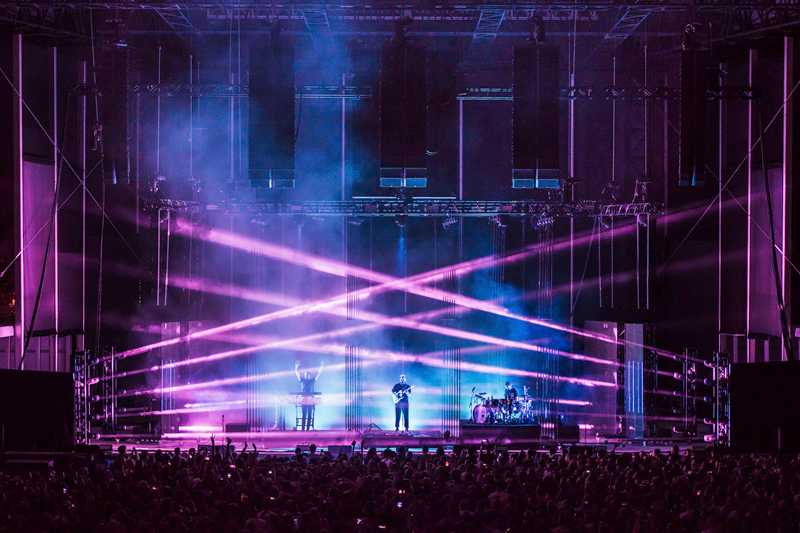alt-J makes history with L-ISA in New York
- Details

“Wherever you’re standing in the audience, you’ll be able to hear the music coming from all around you,” alt-J keyboardist Gus Unger-Hamilton told UK music publication NME ahead of the show.
Lance Reynolds is alt-J’s Chicago-based FOH engineer and has been using L-Acoustics sound reinforcement systems with the band since 2015. He notes that the band’s manager, Stephen Taverner, had been searching for the right technology to present a show in surround for quite a while, so Reynolds visited L-Acoustics’ US headquarters in California’s Westlake Village to personally explore L-ISA as a potential option. “Once I got my hands on it, I was very excited - and immediately started thinking about what we could do with it,” he says. Taverner and the band shared Reynolds’ enthusiasm about creating what would ultimately become one of the coolest live shows in decades.
With everyone on board, Reynolds returned to L-Acoustics to familiarize himself with mixing in L-ISA and, alongside alt-J’s three band members, design a mix for the show incorporating live and pre-recorded elements that would take advantage of the surround capabilities of L-ISA.
“In preparing the mixes for this show, I’m lucky that alt-J has a lot of interesting sonic nuggets and a little bit of sound effects,” says Reynolds. “These elements exist in our normal live show, but with L-ISA, it’s much more evident. There are a lot of things that I’ve been able to just draw out—pinpointing instruments and sounds in specific places. That’s really what this ‘360’ mix is; it’s an extension of what we already do, but a really big extension.
“Usually, I don’t want the audience to notice my mix, per se. Ideally, I want it to sound great while keeping the audience focused on the band. But using L-ISA for this show, I wanted the audience to notice the difference. My hope was that the fans would walk away saying, ‘wow - did you hear that?’ I wanted heads to turn and the audience to feel completely immersed in alt-J’s music.”
Rat Sound, the band’s long-time production provider, flew three arrays of 12 K2 each equally-spaced above the centre of the stage, flanked left and right by single hangs of 16 Kara elements each. Two hangs of eight KS28 subs were flown behind the centre K2 array. Outside those five arrays, to left and right, the team flew extension hangs of 16 Kara speakers, toed in toward the centre. A hang of nine K2 boxes on either side provided out-fill for those seated immediately next to the stage. Three pairs of Kara and a pair of ARCS II delivered front-fill.
Tom Worley (KSE) of Rat Sound created a mounting system for the 16 Syva surround speakers, attaching poles behind the handrails at the upper edge of the seating bowl and fixed the speakers to them. Frequently used for permanent installations and corporate or private event applications, versatile Syva was also the right fit for Forest Hills, says Worley. “They’re loud, lightweight, and have the right dispersion. And even without using a sub with them they go low enough that it made sense.”
L-ISA Controller software was used to place sound objects with the L-ISA Processor dedicated to spatial audio processing, and the entire system was powered by a combination of 15 LA12X and 31 LA8 amplified controllers.
The MADI transport capabilities of Reynolds’ console of choice, the Avid S6L, supported 32 outputs to L-ISA, which can accept up to 96. “You could send to individual channels, one to one, but I did it with stems,” he reports, noting that it was easier to bus together both kick drum mics to a single channel, for example. “Plus, I needed some extra channels to do some submixing and some things to get sources into the surrounds that made sense,” he adds.
L-ISA mixing integrated seamlessly into Reynolds’ workflow at Forest Hills. “The desk was simply feeding mixes to L-ISA and I was doing any movements via snapshot automation in the L-ISA controller,” he says, driven by the timecode running the show automation that controls the lighting and other production elements.
(Jim Evans)












